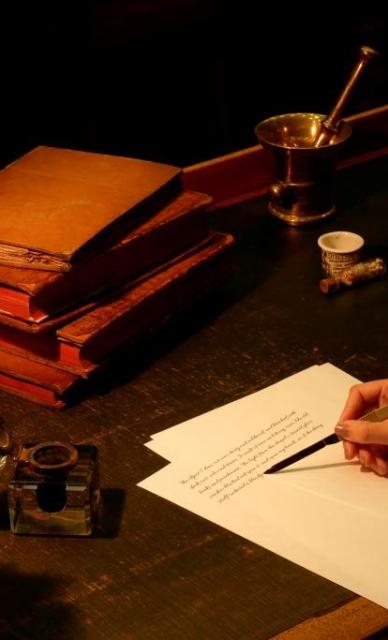Physicians' Gallery Newsletter
Updates on upcoming events, exhibitions and online stories
(1716-1805)
President

The College still has Threipland's medicine chest, used at the Battle of Culloden, in its collections. You can discover more about this chest in the following articles:
The Threipland family originated in the Borders, but around 1600 they moved to Perthshire, buying the Fingask estate and its castle in the foothills of the Highlands, between Perth and Kinross. When the 1715 Jacobite Rebellion started Sir David Threipland immediately joined the Earl of Mar and his men, hoping to reinstall a Stuart on the throne. He was captured by government troops but escaped into exile (although some have claimed that he died in captivity). In 1716 his wife had a premature son whom, not surprisingly, they called Stuart. Soon after, the family were permitted to return, not as owners but as humble tenants of their old home.
Stuart Threipland eventually entered the University of Edinburgh to study medicine. In 1737, he helped to found the student organisation later known as the Royal Medical Society and later served as its president. In 1778 the society was granted a Royal Charter, the only student body ever to be so honoured. After qualifying Stuart started a practice in Edinburgh.
The year 1745 saw Prince Charles Edward Stuart, the son of the 1715 rebellion’s leader, raise his standard in another attempt to regain the throne for a Stuart. Threipland and his elder brother, David, immediately joined the Jacobite army. David soon lost his life in the battle of Prestonpans, while Stuart became the senior medical officer throughout the campaign, which spanned as far south as Derby and then back to the disaster of Culloden in 1746.
Together Threipland and Prince Charles managed to escape and make their way to Badenoch where they hid in a cave. Here Threipland also cared for the clan chieftain Cameron of Lochiel who had serious ankle injuries. Dressed as a Presbyterian minister (although in fact he was an Episcopalian), Threipland reached Edinburgh where he changed his dress to that of a bookseller’s apprentice. He eventually reached France about the time Prince Charles returned to exile there.
The 1747 amnesty allowed Threipland to return to Scotland, although his fellow medical officer at Culloden, Archibald Cameron, did not fare so well and was, in spite of the pleadings of Professor Alexander Monro primus, hanged at Tyburn in London.
Threipland married and made his new home in Edinburgh’s Fountain Close where the Royal College of Physicians of Edinburgh had its first home. His practice thrived and within a few years he moved to Bishop’s Land in the High Street, where he was attended by a butler, a footman, a coachman and his boy and several maids. He lived in Edinburgh during the glorious years of the Enlightenment and the flowering of our College, of which he was President from 1766 to 1770.
As he approached retirement Threipland repurchased the Fingask estate, his family’s old home, and restored it to its former glory before he died aged 89. The estate exists to this day and is again owned by the Threipland family. Threipland’s devotion to the Stuarts never faltered, demonstrated by his continuing to toast ‘the King across the water’.

Physicians' Gallery Newsletter
Updates on upcoming events, exhibitions and online stories